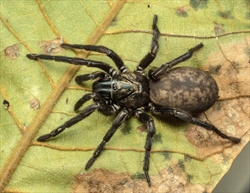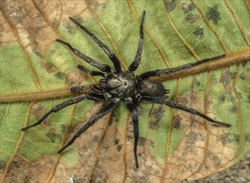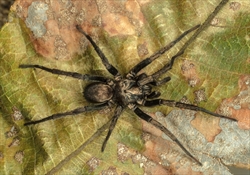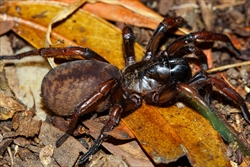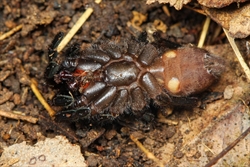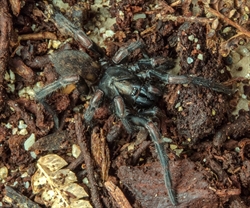Medium to large (4-20mm or more).
Fact Sheet
Pycnothelidae: unplaced: Stanwellia
Western Australia, New South Wales, Victoria, South Australia, Tasmania, Australian Capital Territory, New Zealand.
Temperate rainforest, open eucalyptus forest.
Four. PLS segments equal in length; apical segment digitiform.
Caput of females gently raised, higher than thoracic portion; fovea of females more or less straight.
Eyes eight; group tiny, about 0.3 of headwidth; two rows; rows equal in width; on tubercle.
Chelicerae fangs longitudinal; retromargin without teeth; middle row of teeth distinct; intercheliceral tumescence in male present; rastellum absent or with weak spines.
Maxillae longer than wide; anterior lobe small, indistinct; serrula present; cuspules in female numerous, dense clustered at anterior inner corner.
Labium wider than long. Cuspules few or absent.
Sternum shield-shaped; with three pairs of sigilla.
Tarsi of females and males flexible; preening combs on metatarsi absent; simple filiform trichobothria for length.
Claws: three; paired claws with two rows of teeth; third claw in female bare; with many hairs of different lengths below, lower claw sometimes not readily evident; tufts absent, or tufts immovable and extended as hairs from end of tarsi.
Scopula: in females, on tarsi and metatarsi.
Embolus originates straight off bulb.
Stanwellia.

